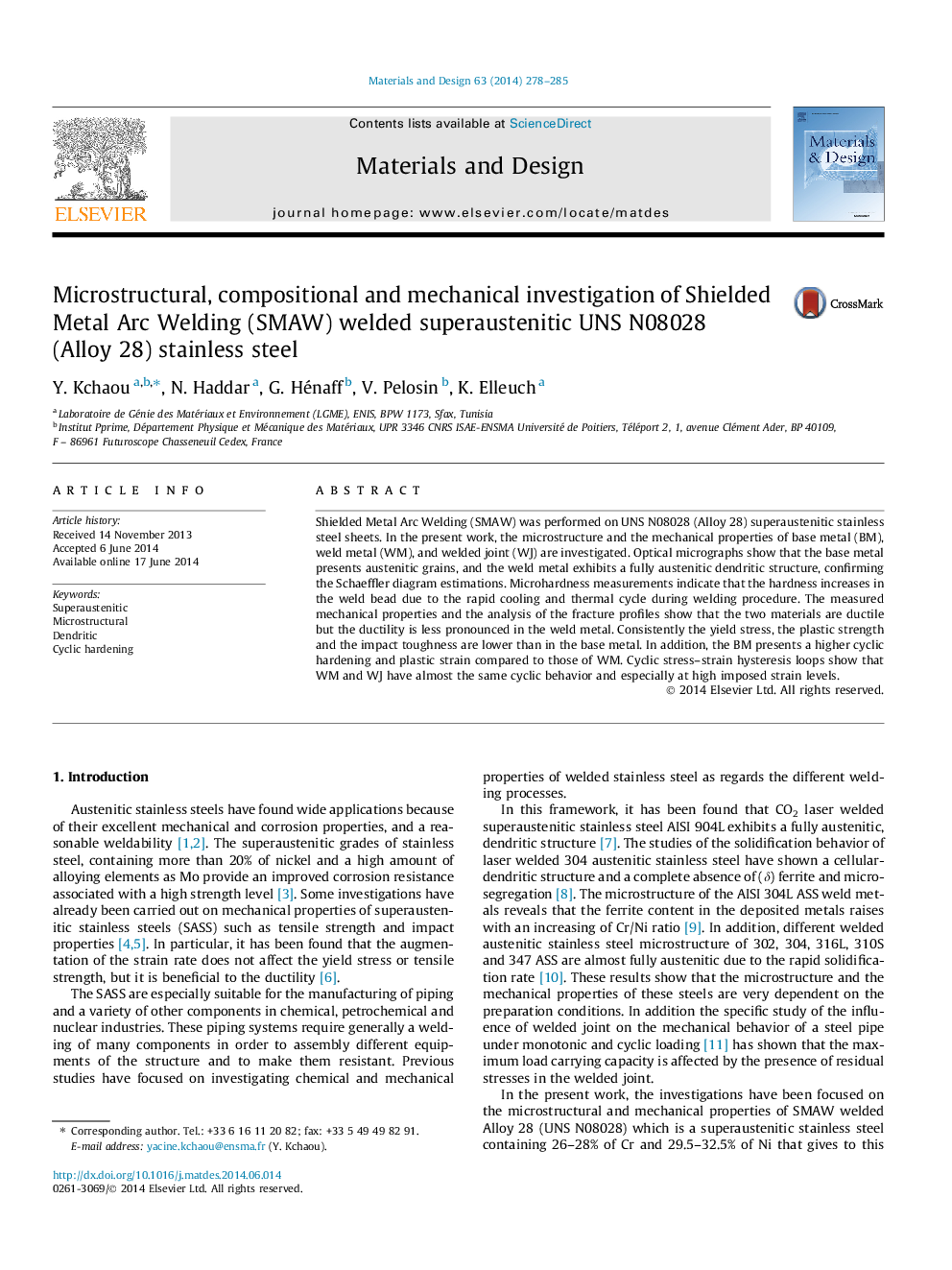| Article ID | Journal | Published Year | Pages | File Type |
|---|---|---|---|---|
| 829004 | Materials & Design (1980-2015) | 2014 | 8 Pages |
•The microstructures of the base metal and weld metal are different.•Tensile properties of weld metal are higher than base metal excluding ductility.•Base metal presents a higher plastic stain than weld metal.•Base metal presents a higher cyclic hardening compared to weld metal.•Cyclic behavior of welded joint is the same than weld metal specimens.
Shielded Metal Arc Welding (SMAW) was performed on UNS N08028 (Alloy 28) superaustenitic stainless steel sheets. In the present work, the microstructure and the mechanical properties of base metal (BM), weld metal (WM), and welded joint (WJ) are investigated. Optical micrographs show that the base metal presents austenitic grains, and the weld metal exhibits a fully austenitic dendritic structure, confirming the Schaeffler diagram estimations. Microhardness measurements indicate that the hardness increases in the weld bead due to the rapid cooling and thermal cycle during welding procedure. The measured mechanical properties and the analysis of the fracture profiles show that the two materials are ductile but the ductility is less pronounced in the weld metal. Consistently the yield stress, the plastic strength and the impact toughness are lower than in the base metal. In addition, the BM presents a higher cyclic hardening and plastic strain compared to those of WM. Cyclic stress–strain hysteresis loops show that WM and WJ have almost the same cyclic behavior and especially at high imposed strain levels.
Graphical abstract.Figure optionsDownload full-size imageDownload as PowerPoint slide
